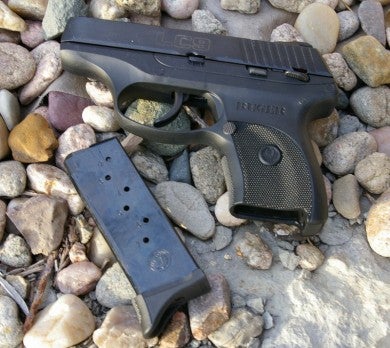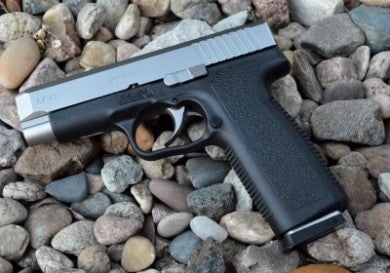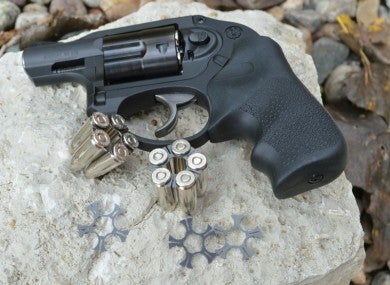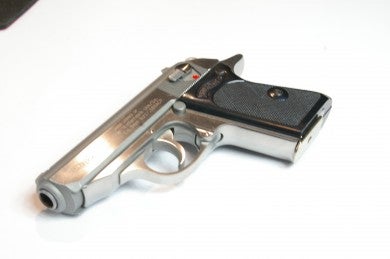When it Comes to Choosing a Carry Gun, Size Matters
Major Pandemic 11.12.14
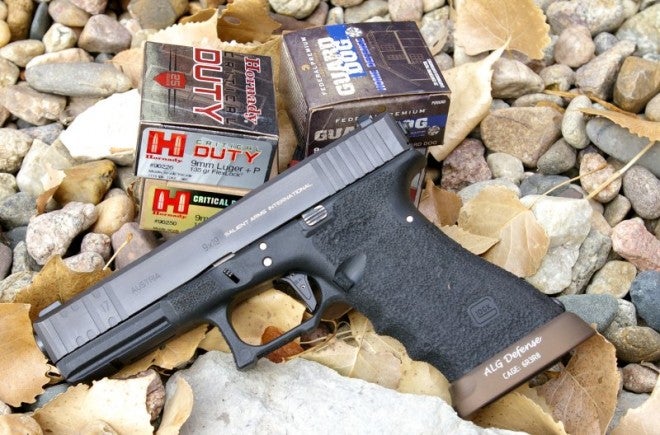
When one body exerts Force (Mass X Acceleration) on a second body, the second body simultaneously exerts a force equal in magnitude and opposite in direction on the first body. – Isaac Newton
All too often, I hear new shooters say that they do not like recoil so they want to buy a small dinky lightweight handgun. Well unfortunately, Mr. Newton would vehemently disagree with them on this common misconception. The main problem is that a “small,” sub-compact gun half the size and a quarter the weight of a full sized handgun is typically not shooting a round 50%-75% less powerful. Most are still shooting the same 9mm or .38 Special ammo in just a smaller gun. The result is that when all the power contained in the round is let loose from pulling the trigger, approximately 300-400 ft/lbs of energy, the bullet energy going forward must be completely managed via the mechanical internals of the gun, leverage, or weight, or you will feel recoil. The reality is that no gun manages recoil completely and you will feel some degree of recoil; sometime less, sometimes more.
Especially with handguns, size does matter. In almost all cases, a larger heavier gun will shoot with greater control, be easier to operate, deliver better accuracy, and deliver far less kick/recoil to the shooter. In most cases, this rule also applies to revolvers as well.
No matter how you slice it according to old Newton, when you have 400 ft/lbs of energy leave the front of the barrel, force equaling that 400 ft/lbs of energy is coming back into your hand and it needs to be dissipated in some way.
Weight
Weight is one of the most significant factors to reducing recoil. If you get a gun heavy enough, recoil can be nearly eliminated unless you start increases the power of the cartridge as well.
Weight is one reason the giant 6” Ruger GP-100 in .357 Magnum is a favorite of mine. With standard .357 Magnum loads, the heavy pistol is a blast to shoot with very little recoil due to the weight. Take that same .357 Magnum round and drop it in a Desert Eagle Semi-Auto pistol with even more weight plus a gas driven semi-auto action and you feel like you are shooting almost a rimfire cartridge.
Toss that same .357 Magnum round in a uber-light 17oz Ruger LCR and your hand, arms, and body will experience a lot more abuse. Weight is one reason the not particularly light 1911 style pistols are so pleasant to shoot. For a home defense handgun, do not be afraid of a bigger and heavier gun. The weight will make it one of your favorite guns to shoot, which will make you want to train and practice more.
Mechanical Internals
Revolvers unfortunately cannot mechanically manage recoil like a semi-auto can, so most shooters will note in a side-by-side test that a small .38 Special snub nosed revolver will deliver more recoil than a similarly weighted, powered, and sized 9mm compact semi-auto pistol. Revolvers are without question easier to operate for novice shooters, but the semi-autos are drastically more comfortable to shoot. The main reason for this is that the semi-auto spring/slide action absorbs some of the recoil by using it to cycle the firearm.
This semi-auto mechanism also distributes the recoil impulse over a short period of time while the slide and spring cycles the action, and this creates a buffering effect on recoil. This is the same reason we bend our knees jumping off a chair. We can distribute the impact energy over a period of time using our knees as a spring versus locking out our knees and jackhammering ourselves into the floor. On revolvers, there is nowhere for the energy to go that is not compensated by weight or leverage, so a larger percentage of the recoil is felt by the shooter.
Extending this concept to rifles and shotguns, bolt action and pump action shotguns without question deliver more recoil to the shooter than a semi-auto rifle or shotgun action simply because the semi-auto action can absorb more of the recoil energy. At one time I had an old Savage 12 Gauge bolt action shotgun and it was downright abusive to shoot; my Browning A5 is of course a dream with very little recoil.
The cycling of a semi-auto action burns off some of the recoil energy in the form of slide friction, spring tension, potentially the flex of the polymer lower receiver, slide weight cycling, and other friction points. If you want lower recoil, buy a semi-auto action pistol, rifle, or shotgun.
Leverage and Easier Operation
As noted above, a bigger and longer semi-auto handgun will deliver less felt recoil, and a full grip (versus two or three finger grip) will increase leverage/control when hand cycling the gun.
Improved shooter leverage with a full sized grip and more pistol weight/length out in front of the hand ultimately delivers a softer feeling recoil because more weight of the gun can work to control recoil when compared to the same round being fired in a shorter gun.
Revolvers are typically designed to place the grip very far rearward and low compared to the bore axis to maximize leverage and decrease recoil. However, despite weight and this rearward leverage advantage, revolvers generally still deliver heavier recoil to the shooter than an equivalently heavy semi-auto.
